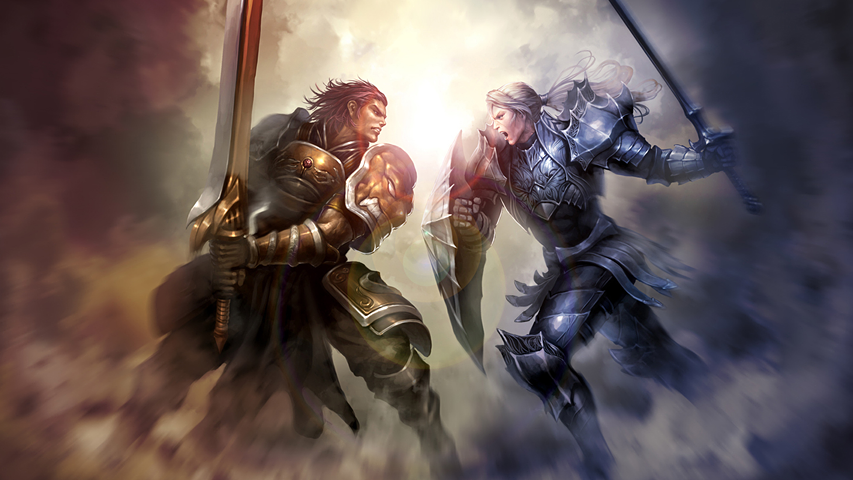Types of social interactions in MMO
In one piece, Fred Tang, a designer from Beijing, collected all kinds of social interaction in MMO. We offer a short version of the article originally published on Gamasutra on our pages.

• Adding friends
A viral function that is no longer aimed at interaction between users, but at popularizing the application. On the other hand, for example, in projects with leader boards, this works for re-engagement, since competing with a real acquaintance is much more exciting than with someone unknown.
In Japanese battlers, a special invitation mechanism is common, which, however, is also aimed at re-involvement.
As a rule, in eastern games, the player must choose a companion from a random selection to complete missions. After passing it, he can send him an invitation to friends. In case of a positive response to the request, the satellite can be reused. This gives buns to both players. That’s just, for example, in Puzzle & Dragons, you can reuse the same assistant only if its owner managed to exit and enter the game after the first user (more details here).
• Greetings
Another social mechanism of re-management. According to Tang, it is very common in Japan. Players can leave greetings to friends to get a bonus. Accordingly, one leaves a greeting, the other leaves a greeting, both receive a greeting notification, click on it and earn some in-game currency, experience or something else. In fact, mutual spam for money.
• Request gifts
This mechanic immediately resembles greetings, and the next item is “Help”. The point is to form a “vishlist” with which friends can help. There is no question, however, of necessarily helping. This or that item may be requested for accumulation, for completion of construction or compilation of a collection. And if so, then from the point of view of balance, this is not the best tool. It is very popular in the USA, but not in Asia, where it is considered impolite.
• Help
This mechanism is similar to the previous two, but here the player forms a request just at a critical moment. For example, at the moment of approaching the end of the energy strip. Or before the paywall, as it was in Candy Crush Saga.
• Chat
The usual tool for MMORPG (and in mobile for midcore / hardcore strategies), which is a full-fledged messenger within a specific game. It works to form a community of loyal players in the game itself.
• Status display
Demonstration of whether friends are in place and what they are doing in the game (in fact, a technique borrowed from social networks in which it is displayed whether your virtual friend is active or not). According to Tang, this technique is very common in games on the Mobage platform.
• Poses
A common type of communication in MMORPG, which can also be compared with stickers and emoticons: the simplest, fastest, and most importantly, an emotion-bearing way of displaying one’s own reaction to the interlocutor’s statement.
• Avatars
In China, avatars are an important monetization component. The demonstration of high costs for a virtual disguise raises the status of a player in the Middle Kingdom.
• Profile
Tang also refers to it as a tool of social interaction, since information about the player is another way of representing him to the gaming community.
• Cooperation
Direct interaction of players with each other within the game to achieve a common goal.
• Competition
Direct or indirect (the leader board, for example) interaction of players with each other within the game, reduced to the desire of each participant in the process to get a higher, conditionally, score than other participants.
• Trade
Another type of direct interaction, aimed this time at obtaining the necessary in-game resources through exchange.
This is the list that turned out, is there something to add?